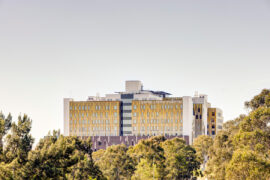In a time of climate emergency, how can cities support and balance the needs of their people and the planet, while ensuring their prosperity?

January 29th, 2024
With its new book, ‘Well-being for All: A Holistic Framework for Tropical Cities’, WY-TO Group delves into research across the fields of urban planning, health, architecture and sociology to address questions of climate emergency and reimagine the future of cities. The comment piece below is written by WY-TO Group.

Why is Well-being important?
Stemming from research and design exploration of the 1870-hectare Paya Lebar Air Base Conceptual Master Plan – a project in Singapore from 2021-2022 to reimagine part of the East region in 2050 – WY-TO Group found that current goals of liveability are not enough to address the lived experience and impact of cities and their development.
In Singapore and other developed cities, frameworks regarding the built environment tend to focus on specific aspects of well-being, unwittingly leaving out others. Quantifiable and ‘tangible’ indicators, such as the green performance of buildings, are easier to measure and implement, while more ‘intangible’ elements tend to be left out of project considerations, possibly due to the complexity of identifying, quantifying and measuring outcomes. These include indicators such as cultural heritage, diversity of communities, freedom of creativity, sense of agency, nurtured neighbourhood identities, the sensorial experience of environments and more – all of which are essential in measuring the success of place-based implementations.
Thus, while cities like Singapore can perform well on various global liveability rankings for cities and fulfil the basic requirements of stability, healthcare, culture, environment, education and infrastructure, more intangible goals – such as a strong sense of attachment to the city and places, or overall high standards for mental health – might fall through the cracks.
This discussion is also held in the context of the climate emergency, as humans consume resources faster than the planet can replenish them. As reported by the International Energy Agency in 2021, cities accounted for “two-thirds of global energy consumption and more than 70 per cent of annual global carbon emissions.” Within this, the “buildings and construction sector accounted for 36 per cent of final energy use and 39 per cent of energy and process-related carbon dioxide emissions in 2018.”
In addition, the built environment also has the capacity to impact other high emission areas such as transportation and power. Therefore, the future development of prosperous cities needs to take into account planetary boundaries towards regenerative action, balancing the well-being of both the planet and its people in a holistic approach to the built environment.
Related: Measuring social value with Hayball

4 ways for cities to achieve holistic well-being
Recognising the multifaceted needs of the planet and people towards their prosperity, we define well-being as:
The ability of people and planet to live in harmony in a way that brings about sustainable flourishing, growth and restoration in the dimensions of the natural environment; the heritage, development and circularity of the built environment; individual and community health (physical, social, psychological, eudaimonic); holistic education (technical skills, soft skills, creativity); resilient workforce and governance; participation in leisure and culture; economic contentment; a sense of play, agency and choice; resulting in the highest possible quality of life for all current and future communities.
To shape cities of well-being, a toolkit was developed with a framework of 12 Principles, 48 objectives, and a host of strategies across the scales to achieve them. The toolkit can guide stakeholders towards a holistic approach in these four ways:

What can we do?
Each with their own unique understanding of cities’ and communities’ needs, everyone has a part to play in improving well-being in our cities – from policymakers to urban planners, community organisers and everyday residents who, for example, want to start a shared garden in their community. Such interdisciplinary collaboration between stakeholders across scales is necessary for holistic well-being for all to be achieved, shaping sustainable, thriving cities that bring good to the planet and its people.
Designed and written in the context of the tropical city of Singapore, the framework and its scales of intervention can be well adapted to other equatorial cities such as Jakarta, Kuala Lumpur, Bangkok and Manila. It is our hope that over time, new strategies and collaborations can emerge as various stakeholders adopt and adapt the framework to their respective context and needs. Building on the book, a collated database of strategies can then serve to guide new generations of planners, designers, community organisers and others towards creating cities of well-being for all.
Learn more about WY-TO Group’s research into the well-being of tropical cities and the new book here. WY-TO will also be hosting a public sharing session on ‘Well-being for All’ on Wednesday 21st February 2024 from 6 – 8 PM – find out more here.
This project is made possible with the support of the Good Design Research (GDR) Grant by DesignSingapore.
INDESIGN is on instagram
Follow @indesignlive
A searchable and comprehensive guide for specifying leading products and their suppliers
Keep up to date with the latest and greatest from our industry BFF's!

For those who appreciate form as much as function, Gaggenau’s latest induction innovation delivers sculpted precision and effortless flexibility, disappearing seamlessly into the surface when not in use.

Merging two hotel identities in one landmark development, Hotel Indigo and Holiday Inn Little Collins capture the spirit of Melbourne through Buchan’s narrative-driven design – elevated by GROHE’s signature craftsmanship.

At the National Wool Museum, a new exhibition traces the evolution of Godfrey Hirst and its long-standing role in shaping Geelong’s industrial and design identity.

MillerKnoll releases the 2025 Better World Report showcasing how design can drive meaningful change through measurable progress across social, environmental and governance initiatives

BLP’s new Sydney Children’s Hospital, Randwick building brings together paediatric care, family-centred design and Australia’s first Children’s Comprehensive Cancer Centre in a major addition to the Randwick Health & Innovation Precinct.
The internet never sleeps! Here's the stuff you might have missed

Bangalore studio Multitude of Sins elevates true leftovers — not surplus — into a richly layered workspace where waste materials become narrative, structure and sculptural expression.

The BLP Managing Director & Principal has been named recipient of the very first Australian Health Design Council (AHDC) Gold Medal Award.